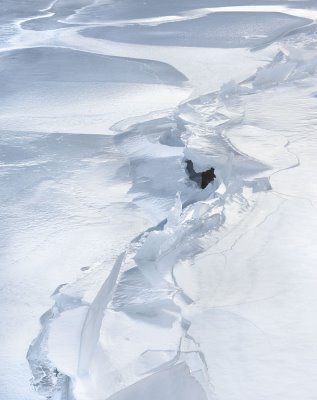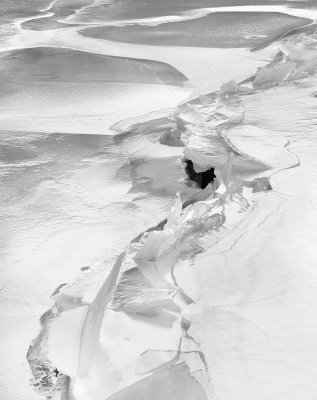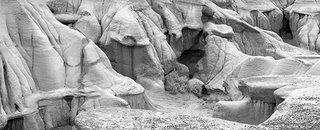1) start with a raw file that records all the range of tones you want to print - and if need be shoot diff. exposures and blend.
2) use the clipping warnings in camera raw to make sure you don't lose either highlghts or shadows - and in the case of shadows, play it conservatively and give yourself some operating room (really dark shadows are highly amplified in digital work and just like turning your stereo up really high, you start to get distortions). This ends up looking like grain but can completely spoil an image.
3) use enough pixels or more to the point, don't print larger than 300 native pixels per inch except in exceptional circumstances. No uprezing, no cheating, lots of detail. For goodness sakes, don't oversharpen the image. My own technique is to use smart sharpen built into photoshop and output sharpen from Photokit, for a print size about 25% larger than the one I am going to make (ie. the sharpening is a bit more subtle in my prints).
4) do not use burning and dodging in photoshop - it's been my experience that working on the original image with these two tools is destructive to the image quality. Instead use layers and masks. My own preference is to use curves made for each part of an image, but there are other valid ways to use layers and masks.
5) Use a dedicated black and white driver - either Epsons in their new series of pigment printers - the 2400,4800,7800,9800 series, or even better, either Quadtone Rip or Imageprint.
6) make sure that you are using the full range of tones - don't rely on the screen to tell you - use threshold layers to show you the tones above 253 or below 6 (on the 8 bit scale even when working with a 16 bit image) and adjust the tonal curve to create some blacks and whites in most images with detailed highlights and shaddows as required.
7) Never ever assume that what you see on the screen is what you get out of the printer - no matter how you profile your monitor or your printer, in black and white, it doesn't count - you still need to make lots of prints. DO NOT BE AFRAID TO USE LOTS OF PAPER. of course, if you don't know what the absolute best looks like, it's hard to come close - you have to look at prints from the greats. There are lots of superb printers around who are happy to show their prints at workshops and such and I can highly recommend the workshop experience.
8) Print onto a good paper - not all papers take as much ink or record detail as well or limit ink spread equally well - oddly good old Epson Enhanced Matte is a lovely paper producing very deep blacks and lots of detail, but it is a thin paper which must be dry mounted and protected from the air which can cause yellowing in some batches. Still, dry mounted and framed behind glass with archival materials, it is very nice.
9) having made the best print possible, pin it to your wall so you can live with it for a while. One nice thing about digital is you can pick up where you left off and improve it further - though even in digital, sometimes i go to far and have to start over.
10) print for the kind and brightness of light under which you plan to view the print - I confess I have no understanding of the rationale for these new 'viewing' lights which have a colour temperature matching noon - I never take my prints out at high noon to look at them in bright sunlight - why would I want to use a similar light to check colour and tone? My prints are generally looked at under ordinary fluorescent or incandescent bulbs, or under the blue skylight that comes in windows to indirectly light my prints.























